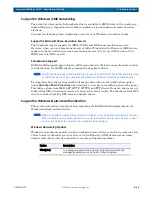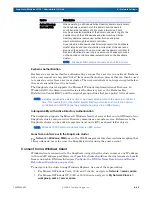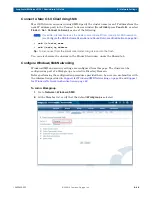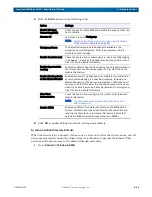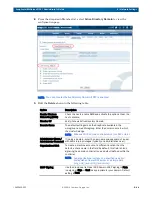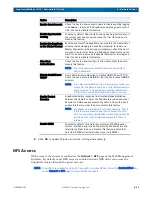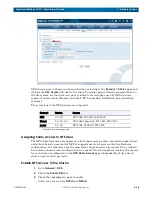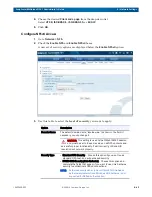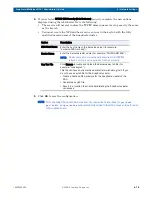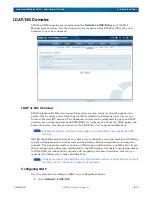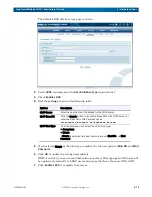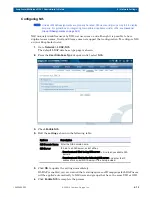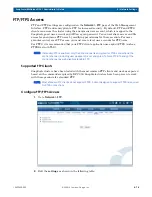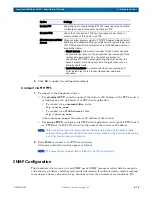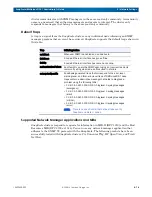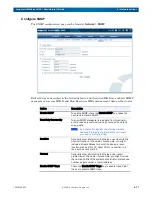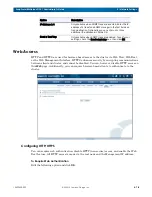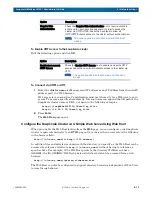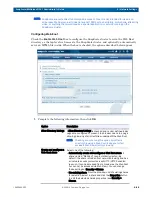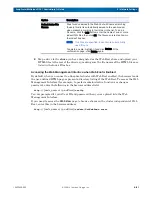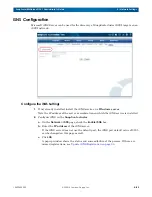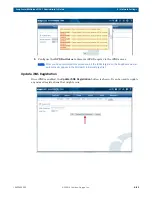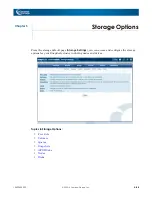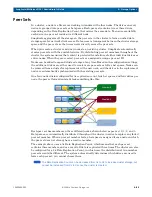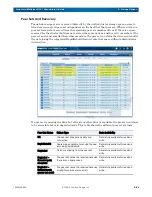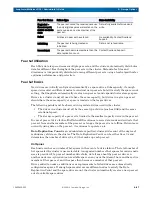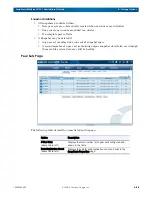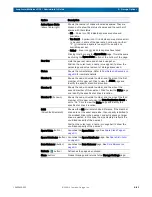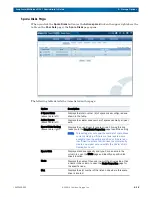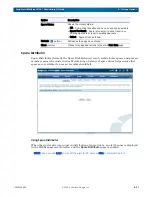
10400455-002
©2008-14 Overland Storage, Inc.
76
SnapScale/RAINcloudOS 4.1 Administrator’s Guide
4 – Network Settings
cluster communicates with SNMP managers in the same read-only community. A community
name is a password that authorizes managers and agents to interact. The cluster only
responds to managers that belong to the same read-only community.
Default Traps
A
trap
is a signal from the SnapScale cluster or any individual node informing an SNMP
manager program that an event has occurred. SnapScale supports the default traps shown in
this table:
Supported Network Manager Applications and MIBs
SnapScale clusters respond to requests for information in MIB-II (RFC 1213) and the Host
Resources MIB (RFC 2790 or 1514). You can use any network manager application that
adheres to the SNMP V2 protocol with the SnapScale. The following products have been
successfully tested with SnapScale clusters: CA Unicenter TNg, HP Open View, and Tivoli
NetView.
Trap
Initiating Action
coldStart
Whenever SNMP is enabled and a node boots.
linkDown
A node’s Ethernet interface has gone offline.
linkUp
A node’s Ethernet interface has come back online.
authenticationFailure
An attempt to query the SNMP agent using an incorrect read-only
community string was made, and resulted in a failure.
enterpriseSpecific
SnapScale-generated traps that correspond to the error-level,
warning-level, and fatal-error-level traps of RAINcloudOS. These
traps contain a descriptive message that helps to diagnose a
problem using the following OIDs:
• 1.3.6.1.4.1.6411.2000.1000.1:loglevel 0 syslog messages
(
emergency
)
• 1.3.6.1.4.1.6411.2000.1001.1:loglevel 1 syslog messages
(
alert
)
• 1.3.6.1.4.1.6411.2000.1002.1:loglevel 2 syslog messages
(
critical
)
• 1.3.6.1.4.1.6411.2000.1003.1:loglevel 3 syslog messages
(
error
)
NOTE: There is no specific MIB that defines traps sent by
SnapScale clusters or nodes.

